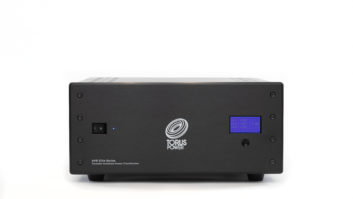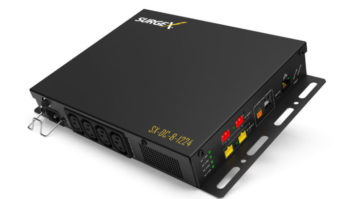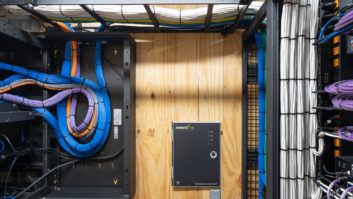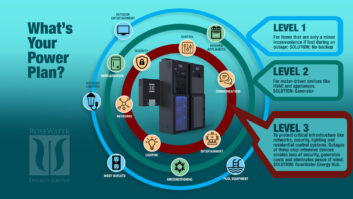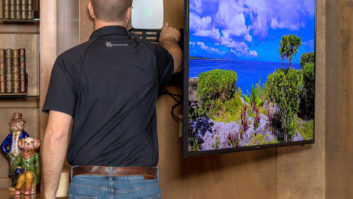Not surprisingly in these times, industry buying groups have pegged power management as an area of growth for custom installers. Here, top integrators advise emphasizing what it can do for their clients while keeping it simple and easy to understand.
For Lance Anderson, CEO, Admit One Systems, a SurgeX dealer, power management has been a critical pillar of installations for a number of years. “Its importance has grown consistently,” he says. “One thing I’ve noticed is that a lot of the products we’re installing — control processors, for example — use a lot less power than older products, and, in turn, lesser power supplies are associated with them. From what we’ve seen, these power supplies can be more sensitive to power disruptions and often can’t keep up with the power anomalies infecting the home. This obviously increases the importance of creating a solid/stable power system in the home.
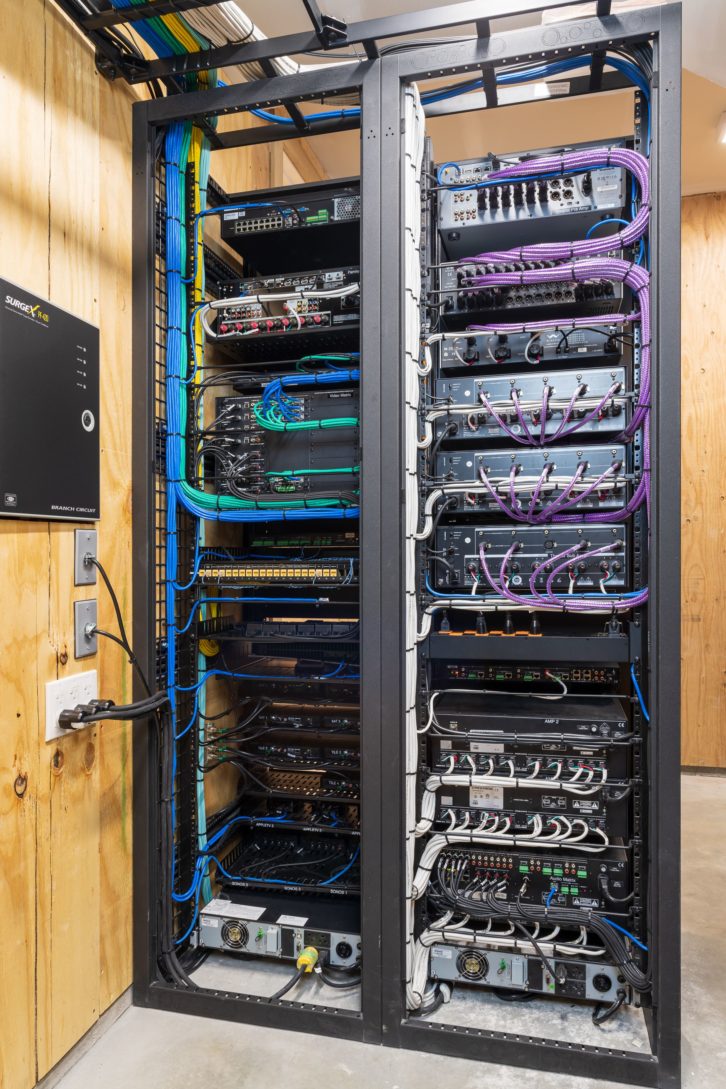
“Additionally, we’ve recognized the importance of service in power management, which is why we advocate for controllable outlets with IP and we reboot in every install,” he adds. “Our clients and projects are increasingly dependent on remote power management, so it’s in every project we do. Being able to analyze challenges in the power environment remotely and find solutions on the spot is a must-have, as there’s no room for error when it comes to keeping complex systems online.”
Lamar Gibson, president, Miestro Home Integration, a RoseWater dealer, says while it’s always been an important aspect of every design, “the sheer volume of ‘connected’ electronics in clients’ homes has increased not just in numbers, but also in pricing. Mitigating outages and protecting equipment have become synonymous with our brand, as we feel it’s our duty to help educate our clients.
“With everyone spending enormous amounts of time at home this past year, they were really interfacing with their home technology more than ever, and they discovered how hard it is to entertain their families when systems don’t work or when the power is out. Before Covid, if you lacked entertainment at home, you simply went out. Well, we all know that couldn’t happen for many, many months.”
Also, Gibson notes, the number of new construction projects this past year has doubled from previous years and has provided more opportunities to start discussions in the early stages of the build. “If you’re building a million-dollar home,” he says, “you wouldn’t ask your builder to use the thinnest concrete for your home’s foundation, would you? Nope, in fact, you would almost always make that the one place you do not compromise. Power is no different. Every day we see clients connecting very expensive devices to the outlets in their homes without considering its ‘foundation,’ and, frankly, it’s usually very bad coming from the utility company. We can plug in a meter and show them instantly how much it fluctuates and why it needs Rosewater.”
Ryan Hills, owner, Digital Home Creations, a Torus Power dealer, says power management has always been a key focus of his business. “Making sure a client’s system is properly protected is becoming more and more important as the power grid continues to expand with the demand for new homes being built with new technology,” he says. “We protect everything from the simple TV install all the way through our high-performance theaters with the same thought in mind — to ensure the survivability of the customer’s equipment for years to come through bad power, storms, power failures, and under-current situations. Our clients rest easy knowing we take power seriously.”
Tell It Like It Is
Steve Elliston, president, Elliston Systems & Design, is also a Torus Power dealer. “In Texas, we have been dealing with major power grid issues lately, which have resulted in temporary outages and frequent voltage drops. Our grid operator, ERCOT, has been unsuccessful at maintaining a reliable grid with an adequate reserve margin which has caused blackouts and inconsistent power.”
In talking to clients, Elliston says that he and his team try not to get too technical. “Essentially, our Texas clients know that power here is not reliable or consistent and that voltage drops can cause severe damage to their system and investment if it’s not protected. We explain that Torus Power protects and stabilizes their system from this potential damage by providing clean power with no voltage drops.”
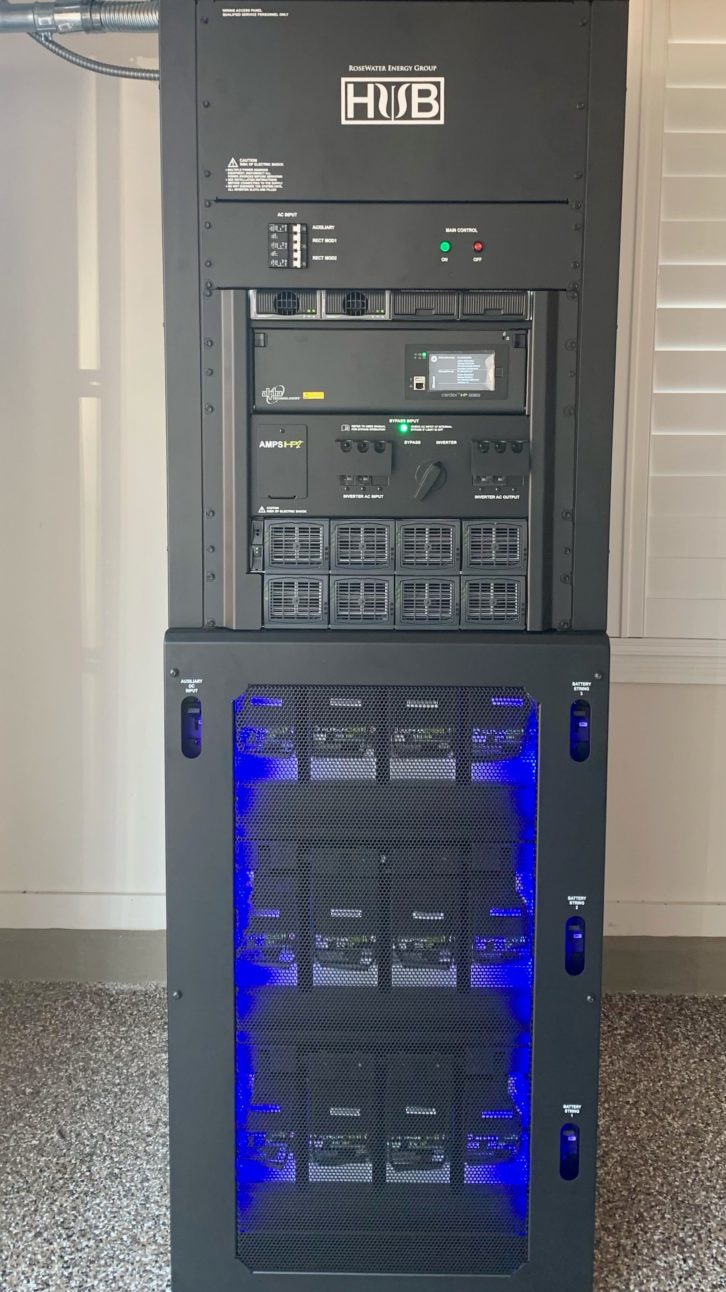
Hills starts off by talking about surge protection and voltage regulation. “Making sure a customer understands why those two items are important also leads into the conversation of UPS backup as well as power isolation. These discussions happen at all levels of our projects, so we can make sure the client knows we have their system protected. When it comes to product selection, we carefully choose the right product based on the power consumption needs, making sure to leave headroom not only for expansion, but also to ensure we are not stressing out the power unit we select. The second most important consideration when selecting power is the ability to remotely manage the power outlets for serviceability. Torus allows us to put in a very robust and, in my opinion, the best built products out there. They are built to perform, and engineered by design for the client’s system needs. Torus is always eager to help with the process, to make sure we have the right product for the job, and they have never let me down.”
At Admit One, every project begins with client education about the foundations of how the company does business and its products. “We present technology options early in the design process,” says Anderson. “A lot of that conversation revolves around power; power is one of our foundational systems along with networking — both critical in ensuring the rest of the technology in the install operates smoothly. We start the discussion early on so if customers are interviewing other integrators, we’re stressing the importance of the installation’s foundation and integrity, and it can be a differentiator for us among our peers. Sure, sometimes the cost of the installation might be a bit higher, but with the right power foundation in place, we can ensure that we’re providing a stable and protected system that will last a long time.
“IP-enabled outlets for monitoring and reboot are pivotal in all our installs,” he adds, “but we also talk about how some types of power management devices perform in a given environment versus others. This part of the education involves talking about things like SurgeX’s online UPS’s versus line interactive UPS’s; there’s a big difference in how they perform and what they’re used for. Integrators need to know the difference between different products and solutions to ensure what they’re choosing is right for the client’s install. It makes a difference when it’s specified properly, and it really improves performance and reliability.
“From SurgeX, we use PF-420s in a lot of projects for protection right at the circuit, and on top of that we also spec different levels of their online UPS’s, behind or in front to keep systems online running,” Anderson says. “We use OL-1000, 2000, and 3000s all the way up to large format UPS’s with a full isolation transformer, depending on what the right fit is for the install. We tell clients that the UPS’s are there to clean and stabilize the foundation from the get-go.”
At Miestro, the team starts out by pointing out the number of devices all around the client’s home such as smart lighting, appliances, audio/video, and, of course, all the expensive tech toys we are all collecting these days, and how each of those devices have microprocessors that make them do the things they do that improve our quality of life. “We then explain that a generator is NOT protection and in a lot of instances becomes the culprit for making a smart home act dumb,” says Gibson. “We explain that a properly designed system should have a generator in conjunction with Rosewater SB20 Hub to provide the reliability and performance our clients expect in every aspect of their daily lives.”
Gibson knows of a few AV integrators in the industry who live off the insurance claims business. “They’ll sell $100k in technology and not use a single power conditioner or battery backup in the system. They are banking on the replacement sale when that client has a surge event. That’s a very shortsighted approach and harms not just the client, but our industry’s sustainability. Clients are willing to pay for quality, and they are also willing to pay for protection. When they have great technology experiences, they spend more money.”
Sell It
Elliston makes sure to include Torus Power in all of his company’s proposals, even if it hasn’t been discussed with the client yet. “We call it the foundation piece and it’s required on all Elliston projects in order for the CI system to function properly and be protected.”
And while selling power to some client’s is simple, to others it can be one of the hardest parts of the job. “Making sure the customer sees the value in the protection must start at day one of the presentation process and must be a topic of conversation until they understand why, and what it is you’re offering them,” says Hills.
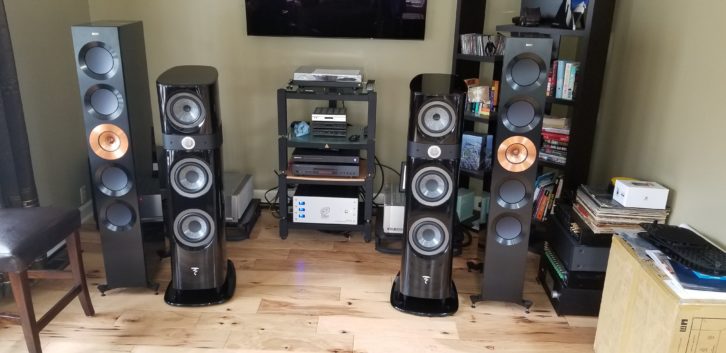
It’s important to point out power management from the beginning, “Power is all foundational, and it’s where we tend to start when we build robust systems and differentiate our work,” says Anderson. “It delivers two takeaways for success: One, it shows that our team is really looking at it all from the ground up and understanding the entirety of the project, from start to finish. Two, if there’s a cost to protect the full installation, it’s worth it. One of my main tips for this to succeed is to embrace client education and get to know exactly which product will protect all of the technology in a space. I’d rather spend the money on surge protection, reboot, remote monitoring, and other foundational pieces early on then worry about it later.
“We’re advocates for using SurgeX enVision at job sites for monitoring. It’s a great tool for integrators to diagnose and tackle any problems with power as they come up; Jimmy Paschke and Vince Luciani at SurgeX are pivotal in helping us diagnose problems and resolve them based on the logs that enVision produces. It’s simple to just plug it in for a month, analyze the patterns, and get to the root of any issues — and it protects the credibility of the install, too.”
For Gibson, working with RoseWater and their representatives on educating his team was the first step. “Our team just wasn’t comfortable with the high-voltage world, so we engaged RoseWater on several training sessions and even had them do calls with us early on. Our industry had mostly taken a back seat to the high-voltage world until recent years, and we needed to accept that we must work harmoniously to deliver the best client experience possible.
“Once you understand that all those expensive electronics start to rebel against you with power fluctuations from the power company and the dreaded in-rush current from generators, and they become useless when the power is out completely, you begin to look at RoseWater as the foundation of every system you design. When the phone rings, we want our clients adding new things and not having service-related issues.”
A recently installed Miestro system features half a million dollars in technology integration, including over 250 low-voltage lighting fixtures, a custom theater, TV lifts, touchscreens, and all the AV you can imagine. “With all that tech installed, we have only had to go out to their home because they wanted to add more fun stuff,” says Gibson. “Not a single service call in over six months, and that’s just not heard of if we are being honest. Not every client can afford this premium level of protection, but 100 percent of them need it.”
